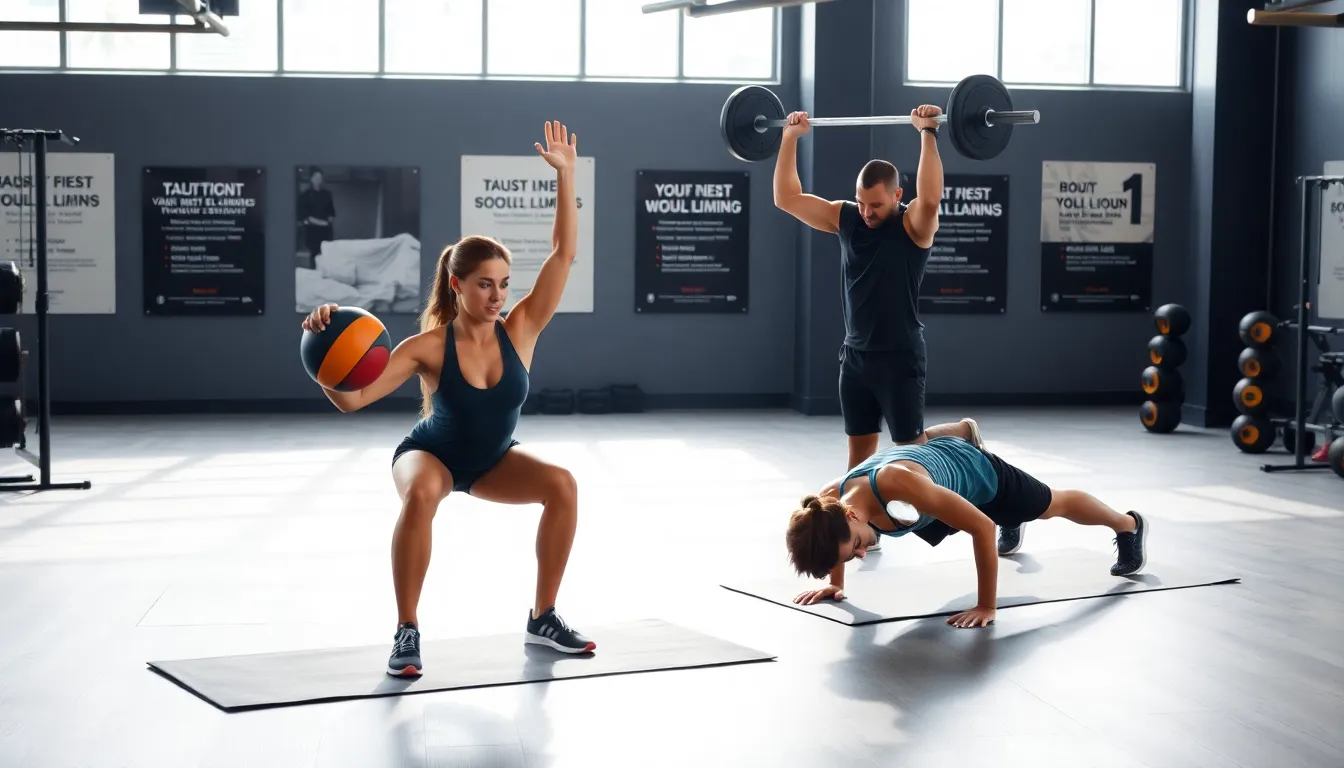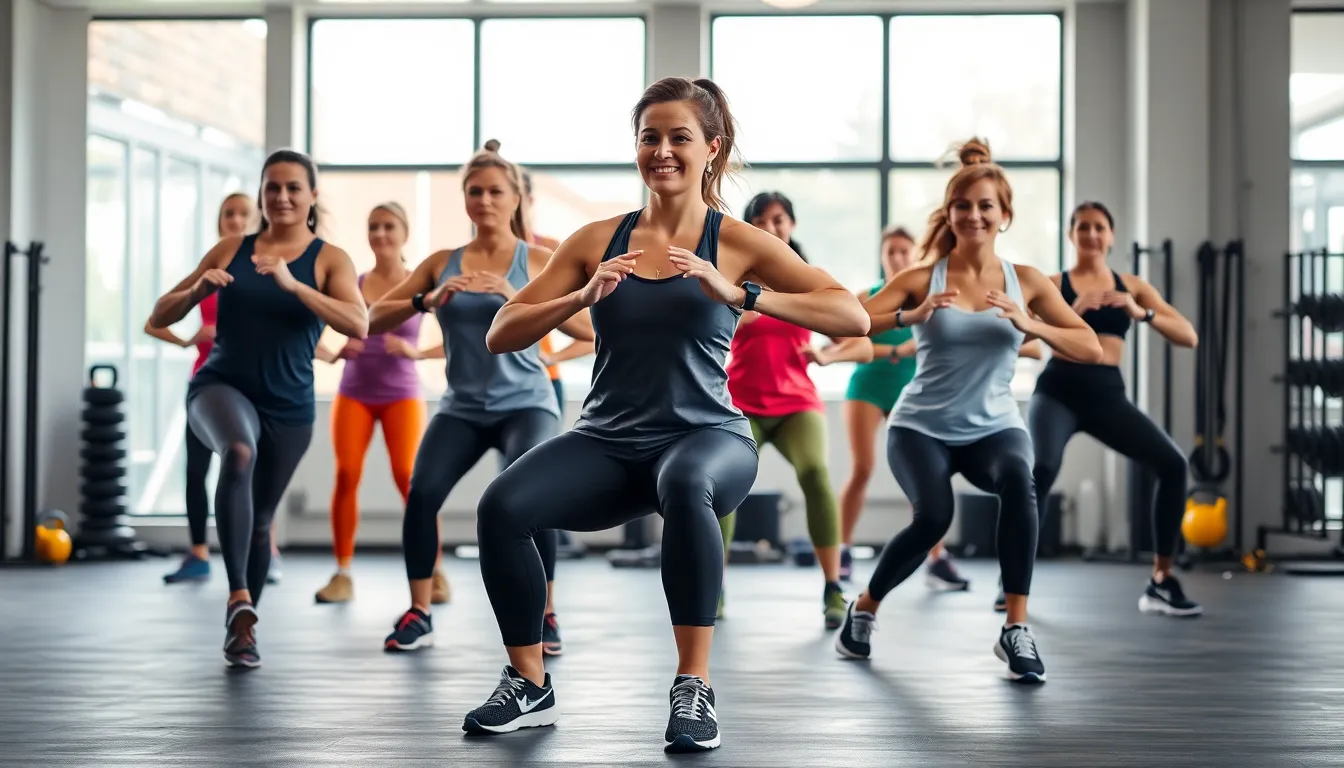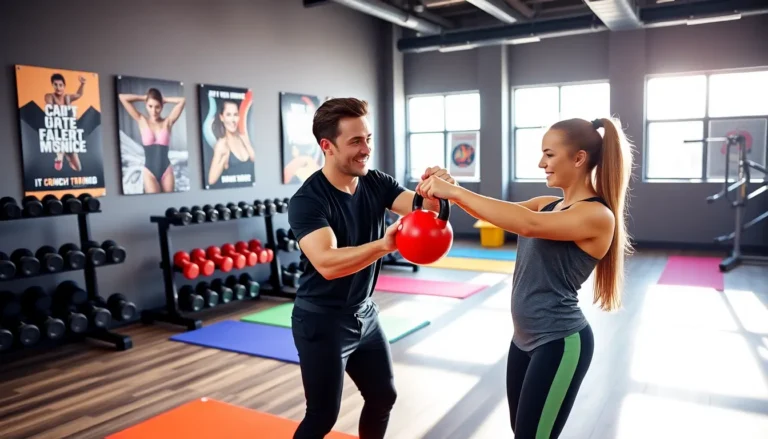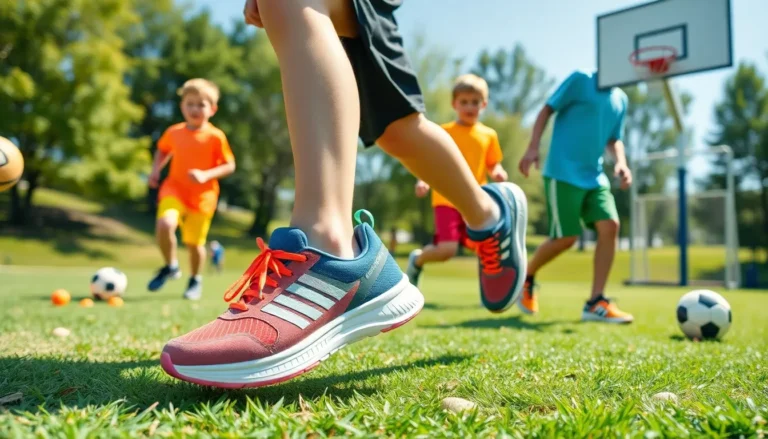Imagine a workout that not only shapes you but also transforms how you approach everyday tasks. That’s exactly what a functional fitness training program does. With the blend of solid strength and a dash of grace (no ballet slippers required), functional fitness is the answer to everything from lifting groceries to climbing stairs without sounding like a winded marathon runner. This article will take you through the ins and outs of functional fitness, complete with benefits, components, and design tips. So, whether you’re looking to slay your next hike or simply want to keep up with the kids, you’re in the right place.
Table of Contents
ToggleWhat Is Functional Fitness?

Functional fitness focuses on exercises that mimic real-life movements. Instead of just pumping iron, individuals train in a way that enhances daily functional movements, like squatting, lifting, pushing, and pulling. It’s all about building strength for the activities that matter most in life. Want to know why this approach is growing in popularity? It’s because it equips individuals to move better, not just look better.
This training style engages multiple muscle groups at once and utilizes various movements to improve strength, stability, and coordination. So, the next time you reach for that high shelf, you’ll notice your back doesn’t protest. Functional fitness is like a personal trainer for your daily life.
Benefits of Functional Fitness Training
The benefits of functional fitness training are almost as impressive as the exercises themselves. Here are a few that stand out:
- Improved Strength in Daily Activities: Performing simple tasks becomes easier. Imagine carrying groceries without needing a halfway rest.
- Enhanced Flexibility and Balance: Staying upright while navigating that pesky sidewalk crack is a cinch with improved balance.
- Injury Prevention: Strengthening muscles and joints reduces your chances of injury. It’s like conditioning your body to handle whatever life throws at you.
- Weight Management: Functional fitness can also be a crucial tool for those aiming to lose weight. It burns calories effectively and boosts metabolism. How’s that for motivation?
- Versatility: These exercises can be tailored to fit any fitness level or age group. So whether you’re 18 or 81, functional fitness has got your back.
Key Components of a Functional Fitness Program
Creating an effective functional fitness program hinges on several key components. Here’s what to consider:
- Multidimensional Movement: Incorporating a mix of movements that require balance, coordination, and flexibility is critical. Think squats, lunges, and rotational movements.
- Strength Training: Focus on resistance exercises that bolster major muscle groups used in everyday activities, such as deadlifts for lifting.
- Cardiovascular Conditioning: Including heart-pumping exercises increases stamina, allowing individuals to perform daily tasks with ease.
- Core Stability: Your core is the powerhouse of all movement. Incorporating exercises that engage the core improves overall functionality.
- Flexibility: Don’t forget to add stretches. Increased flexibility prevents injuries and enhances overall movement range.
Designing Your Functional Fitness Training Program
Crafting your own functional fitness training program might seem daunting, but it’s actually a straightforward process. Start with these steps:
- Assess Your Goals: Identify your fitness goals. Whether it’s improving stamina or gaining strength, knowing your objectives helps tailor the program.
- Choose Appropriate Exercises: Base your selections on the key components discussed earlier. Make sure to include a mix of movements.
- Set a Schedule: Consistency is key. Decide how many days per week you can realistically commit to training.
- Progress Gradually: Start with manageable weights or resistance. As strength and endurance improve, gradually increase intensity.
- Include Recovery: Rest days are as vital as workout days. Letting your body recover prevents burnout and overuse injuries.
Common Exercises in Functional Fitness Training
Some of the most effective exercises in functional fitness include:
- Squats: Great for developing lower body strength. Plus, they help with tasks like lifting.
- Deadlifts: A power move that simulates picking something up from the floor. Talk about practical.
- Push-Ups: These work the upper body while also emphasizing core strength.
- Lunges: Excellent for balance and coordination, mimicking movements like climbing stairs.
- Planks: Strengthening the core is critical, and planks excel at this.
These exercises translate well into everyday movements. So, every session becomes a step toward a more functional lifestyle.
Tips for Success in Functional Fitness Training
To maximize the benefits of functional fitness training, consider the following tips:
- Stay Consistent: Regular training brimming with variety keeps both the body and mind engaged.
- Listen to Your Body: Pay attention to any signals it sends. If something feels off, take a step back and adjust accordingly.
- Mix It Up: To maintain motivation and prevent plateaus, incorporate new exercises or change your routine regularly.
- Work with a Professional: If unsure where to start, consulting a fitness professional can be invaluable. They can provide personalized insights and ensure correct form.





